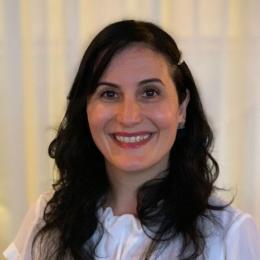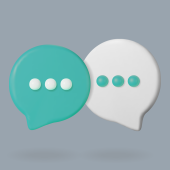When we think of excellence and achievement, we often think of being focused and staying on task — following our “to do” lists, timetables, and calendar reminders. However, extensive focus uses a lot of energy and can exhaust our brains. Research shows that the brain operates optimally when it toggles between focus and unfocus, needing both to allow the unconscious brain to make connections and solve problems, “develop resilience, enhance creativity, and make better decisions.”
The shortcomings of a focused mind
Richard Davidson, a neuroscientist at the University of Wisconsin, calls focus an essential ability. During sharp focus, he says, key circuitry in the prefrontal cortex gets into a synchronized state with the object of focus, which he calls “phase-locking.” For example, if “people are focused on pressing a button each time they hear a certain tone, the electric signals in their prefrontal area fire precisely in sync with the target sound. The better your focus, the stronger the neural lock.”
There are benefits to sharp focus, but this focus can be limiting, and we can miss making connections. For example: Sharp focus is like the beam of a flashlight. “While a bright and narrow beam of light cast straight out in front of you is terrifically helpful if that’s where you need to be looking,” Dr. Srini Pillay writes in his book Tinker Dabble Doodle Try: Unlock the Power of the Unfocused Mind, “what about your peripheral vision and the light you might need to see into the murky middle distance?”
Another example is the well-known invisible gorilla study. Participants were asked to watch a basketball game between a team wearing white and a team wearing black. Participants were told to count how many times the white-shirted team passed the ball to one another. A person in a gorilla suit walked right through the game and most participants, focusing on counting the passes, did not notice the gorilla.
The balance to such sharp focus is “defocused attention,” something often identified in highly creative people who have a “wider spotlight that gives them access to more elements.” These people then have “greater potential to generate more unusual ideas, as they have a wider array of elements than can be combined with the focus of their attention”.
But we don’t need to be a creative genius to have a “eureka” moment, generate novel ideas, and solve problems. We can all do it by learning to access our default mode network (DMN), a collection of regions that are active during rest and are usually deactivated during focused tasks.
The default mode network
Pillay thinks access to the brain’s DMN, known as the “unfocus network,” is just as important as the focus network. The process of “unfocusing” does the following:
- Recharges your brain, reducing amygdala activation and creating calmness;
- Activates the prefrontal cortex and enhances innovation;
- Improves long term memory; and
- Increases activity in the DMN.
There are practical ways to engage the DMN and Pillay suggests first introducing them during periods of the day when the brain would be in a natural slump like right after lunch or in the middle of the day.
Positive constructive daydreaming
Positive constructive daydreaming is a specific type of mind wandering for a short period of time, usually 15 minutes or so, and is characterised by “playful, wishful imagery, and planful creative thought” that serves four adaptive functions: 1. future planning, 2. creative incubation and problem-solving, 3. attentional cycling (when an individual can flexibly switch between various informational streams), and 4. dishabituation (which improves learning since an individual is taking short, recuperative mental breaks from externally demanding tasks).
This type of mind wandering that has been shown to help creativity. “While our minds wander,” writes Daniel Goleman in his book Focus: The Hidden Driver of Excellence, “we become better at anything that depends on a flash of insight, from coming up with imaginative wordplay to inventions and original thinking.” Positive constructive daydreaming is distinguished from other less productive mind-wandering like negative rumination.
During this time, you should engage in a low-key activity such as knitting, gardening, or going for a walk and let your mind wander to something positive like lying on a yacht or a beach or going for a run through the woods with your dog. This wandering then helps us “wander over to a solution.”
In addition, going for a walk on a curved path has been also shown to increase creativity. A 2012 study by Angela K. Leung and colleagues tested three groups, one walked in a rectangle, one sat down, and the last walked freely. The group walking freely outperformed the other two in the mental test they were given.
A five-to-15-minute nap has been shown to give one to three hours of clarity and should be done a few times a week. Occasionally, if you need it for creativity, try napping for 90 minutes.
Doodling can also increase creativity. It can be done during a conference call as it helps a bored or tired mind to stay awake a little longer. A 40 person study in 2009, found that those who doodled during a 2.5 minute dull and rambling voice mail message recalled 29 percent more details from the message when tested.
Block out time for undemanding tasks and holidays
Block out time for daily breaks you find undemanding like walking or doing crosswords, make time for events to break up the monotony of the week, and ensure you take regular vacations.
Goleman describes a conversation he had with Salesforce CEO Marc Benioff who said, “New ideas won’t appear if you don’t have permission within yourself.” When serving as VP at Oracle, Benioff said he took a month off in Hawaii to relax which, “opened up my career to new ideas, perspectives, and directions.” It was during one such holiday that Benioff decided to quit Oracle and start Salesforce.
Actively engaging our DMN can help us to find solutions to unsolved problems, become creative, and enjoy ourselves in the process.




